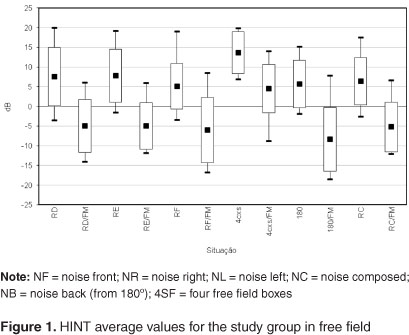PURPOSE: To assess speech perception of hearing impaired children with hearing aids (HA) and frequency modulated system (FM) in situations of noise in free field and in the classroom. METHODS: Subjects were 13 hearing impaired children between 7 and 17 years. It used the Hearing in Noise Test (HINT) with hearing aids and FM. Questionnaire Evaluation System FM was also applied responded by teachers of children in order to assess individually the child's performance in different listening situations only with hearing aids and hearing aid and FM system. RESULTS: There was significant difference for all situations with and without FM at HINT test. The same happened with the results of the questionnaire, and without FM the score is always lower than with FM, regardless of condition. CONCLUSION: The use of subjective measures, such as the questionnaire, it is essential to determine the indication of the effectiveness of assistive devices for the hearing impaired. The effectiveness of the system could be observed by FM "FM advantage," which is the average difference of 10 dB minimum found in the evaluations of speech perception with and without FM noise in different situations. The benefits found in this study using the FM system in the improvement of speech perception can be extrapolated not only to the classroom and to laws of inclusive education, but also for social and recreational activities.
Hearing aids; Hearing; Speech perception; Noise; Questionnaire


